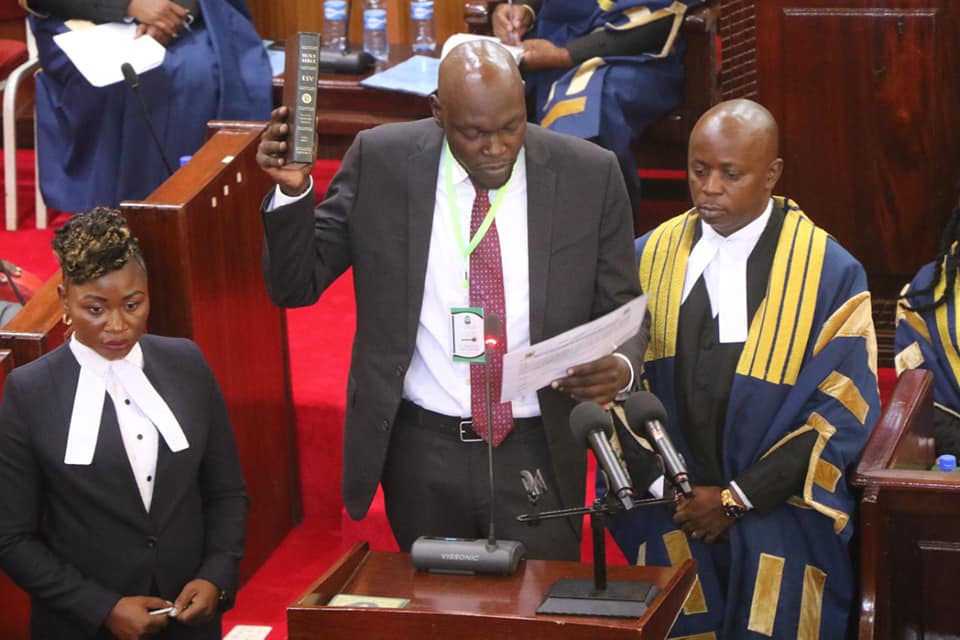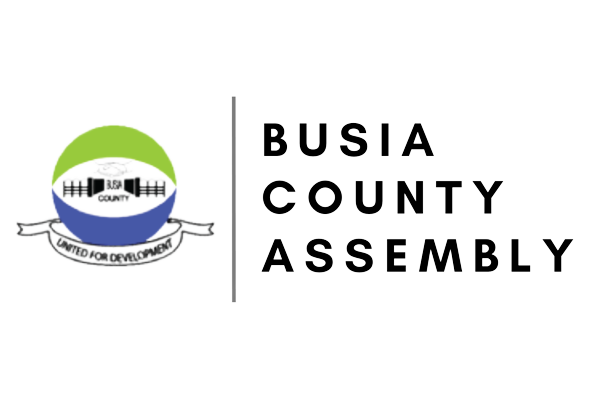About Busia County Assembly
Chapter Eleven of the Constitution establishes devolved governments by creating 47 County Governments. A County Government consists of a County Assembly and the County Executive.
The roles of County Assemblies as provided for under Article 185 of the Constitution and section 8 of the County Governments Act, No. 17 of 2012 are representation, legislation, oversight over County Executive Committee, approving county development planning, approving of budget and expenditure of the County Government, and approving borrowing by the County Government.
County Assemblies make laws applying to the respective County as provided for under Article 185 of the Constitution and the Fourth Schedule to the Constitution.

Bills
Motions
Sitiitngs
Reports
The County Assembly of Busia is one of the 47 regional assemblies created by the enactment of the Constitution of Kenya, 2010 and the County Governments Act,2012.
As presently constituted, the Assembly has a total membership of 54 officials – 35 elected and 18 special elect (nominated) members and a Speaker who is an ex officio.
The first County Assembly was inaugurated on 4th of March ,2013 which ushered in the devolved units of Governance.
Members of the County Assembly are elected for a five year term.
Historical Background
Introduction
The Authority to make laws in Kenya is primarily vested in two institutions; Parliament and County Assemblies. Parliament makes laws that apply nationally, while County Assemblies make laws applying in the respective County.
Kenya has changed from bicameral with Regional Assemblies, at independence, to unicameral and back to bicameral with County Assemblies as the situation currently obtains.
The following is a brief history of the legislature, its establishment and mandate since independence.
Between December 1964 and 1968, the Constitution was amended severally resulting in the abolition of Regions, and merging of the Senate and the House of Representatives.
Kenya reverted to a unicameral where Parliament which consisted of the President and the National Assembly was the principal law maker. The National Assembly considered and passed Bills, while the President assented to the Bills passed.
The 2010 Constitution establishes two organs: Parliament and County Assemblies, with authority to make laws.
(a) Parliament
Parliament is established under Article 93(1) of the Constitution as a bicameral. It comprises of the Senate and the National Assembly.
(i) The Senate
The Senate is made up of 67 members and the Speaker who is an ex officio member. The roles of the Senate as set out under Articles 94 and 96 of the Constitution are __
Ø representing counties, and protecting the interests of counties and those of county governments;
Ø legislating laws concerning county governments;
Ø determines allocation of national revenue amongst counties and oversight utilization of revenue allocated to county governments; and
Ø oversight of state officers and participate in the impeachment of the President and the Deputy President.
The Senate’s legislative role is provided for under Articles 94, 96(2) and 109 of the Constitution. It considers and passes laws which concern counties. Under Article 110(1) of the Constitution a Bill is said to concern counties if __
Ø it contains provisions affecting the functions and powers of the county governments;
Ø it relates to the election of members of a county assembly or a county executive; and
Ø it is Bill affecting the finances of county governments.
(ii) The National Assembly
It is made up of 349 members and the Speaker who is an ex officio member. The roles of the National Assembly as set out under Articles 94 and 95 of the Constitution include representation, legislation, oversight over national revenue and its expenditure, appropriates funds for expenditure by the national government, allocation of revenue, oversight over state organs, approves declaration of war, and removal from office of state officers including the President and the Deputy President.
The National Assembly’s legislative role is provided for under Articles 95 and 109 of the Constitution. It makes laws applying nationally and can consider any Bill, including those concerning County Governments.
Three critical issues to note regarding the legislative function of the Senate vis-à-vis that of the National Assembly –
(i) all Bills considered by the Senate must be considered by the National Assembly before they become law;
(ii) all Bills considered by the National Assembly and touching on County Governments must be considered by the Senate before they become law; and
(iii) Bills that do not concern County Governments are only considered by the National Assembly.
(b) The County Assemblies
Chapter Twelve of the Constitution establishes devolved governments by creating 47 County Governments. A County Government consists of a County Assembly and the County Executive.
The roles of County Assemblies as provided for under Article 185 of the Constitution and section 8 of the County Governments Act, No. 17 of 2012 are representation, legislation, oversight over County Executive Committee, approving county development planning, approving of budget and expenditure of the County Government, and approving borrowing by the County Government.
County Assemblies make laws applying to the respective County as provided for under Article 185 of the Constitution and the Fourth Schedule to the Constitution.
Roles and Functions of the County Assembly
Legislation
Article 185 vests the legislative authority of a county in the County Assembly, giving it powers to make laws that are necessary for, or incidental to the adequate performance of the functions and exercise of the powers of the County Government under the fourth schedule of the Constitution. The legislative responsibilities are also provided for under section 8 of the County Governments Act 2012.
Oversight
The constitution gives the County Assembly powers to oversight over the executive arm , this is in terms of development implementation, laws, policies and even house resolutions.
Representation
The County Assembly ensures coordination and the participation of communities in governance at the local level. The County Assembly members ensure they engage the people on developmental agenda.
Membership of the Assembly
The County Assembly which shall consist of members elected by the voters of the ward;
- 35 Elected Members each elected by the registered voters representing a single ward.
- 18 Special Elect members each representing special interests.
The Speaker who is an ex officio member.
